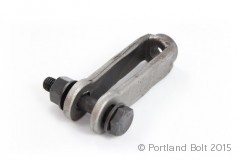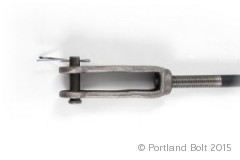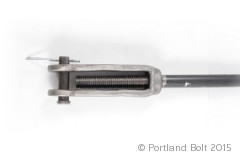As a threaded fastener, the rods are galvanized to ASTM A153 Class C or F2329,, while the clevis and turnbuckle forgings are galvanized to ASTM A153 Class B. The forgings we use are tapped oversized per ASTM A563 to allow for the galvanization thickness of rods since A153 only allows for threads to be tapped oversized but does not give tolerances to follow. Without the threads being tapped oversize, the rods would not be able to thread onto the clevises and turnbuckles. The chasing of threads is not allowed per either galvanizing specifications A153 or F2339.
Frequently Asked Questions
General FAQs
General FAQs
What hot-dip galvanizing specifications cover tie rod assemblies?
Are high strength clevis pins available?
 Yes, pins can be made in any grade of steel you would like assuming that the material is available. Standard sized A325 bolts are a typical high strength alternative and are approximately 2.5 times stronger than standard pins which are typically made from low carbon steel wire. When using a high strength bolt as a pin you must take into consideration the thread length of the bolt to keep clear of the shear plane. A325’s are advantageous in this application since they have shorter thread length than standard bolts. Many times washers are included in the assembly as well as a locking nut since there is not a cotter pin to keep the clevis pin from coming loose.
Yes, pins can be made in any grade of steel you would like assuming that the material is available. Standard sized A325 bolts are a typical high strength alternative and are approximately 2.5 times stronger than standard pins which are typically made from low carbon steel wire. When using a high strength bolt as a pin you must take into consideration the thread length of the bolt to keep clear of the shear plane. A325’s are advantageous in this application since they have shorter thread length than standard bolts. Many times washers are included in the assembly as well as a locking nut since there is not a cotter pin to keep the clevis pin from coming loose.
Can you adjust a clevis only tie rod assembly?
Yes, clevises do have a take up that rods can be screwed into to tighten the assembly. This is typically not as large an adjustment as a turnbuckle but can be several inches depending on the size of the clevis and the pin as you can see in the picture. You can also extend the assembly by about an inch but be careful to keep the entire neck of the clevis engaged with threads or risk the integrity of the assembly.


